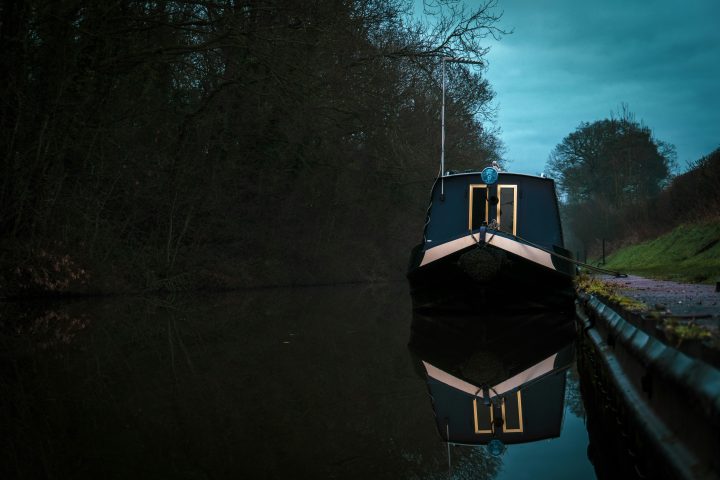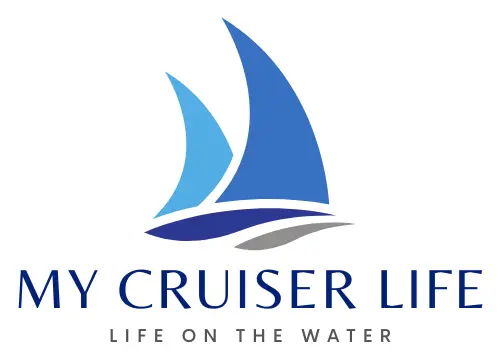Escape the endless cycle of mortgage payments and noisy neighbors. Living on a barge offers freedom from conventional housing constraints that keep millions tethered to land. As housing costs skyrocket and remote work becomes mainstream, many find themselves trapped between unaffordable homes and cramped apartments.
Barge living isn’t just an alternative lifestyle—it’s a practical solution combining mobility, affordability, and connection with nature. In this guide, we’ll explore how living on water can slash your housing costs while providing stunning waterfront views, reveal the hidden challenges rarely discussed, and share insider tips from seasoned “bargees” who’ve successfully navigated this unique lifestyle.

Table of Contents
- What is a Barge Home?
- Cost of Living on a Barge
- Pros and Cons of Barge Living
- Where Can You Live on a Barge?
- Daily Life on a Barge
- Essential Tips for Beginners
- Common Challenges and How to Overcome Them
- Float Your Way to The Barge Life
- FAQs
What is a Barge Home?
Barge homes are unique floating residences that differ significantly from traditional houseboats. Originally working vessels for transporting goods, these sturdy platforms have been transformed into comfortable living spaces.
You’ll find three main types on America’s waterways: narrowboats (long and slim at 7 feet wide), widebeams (10-14 feet wide with more living space), and Dutch barges (with distinctive curved hulls and traditional styling).
Barge living features clever space-saving designs, with power typically coming from shore connections or independent generation through solar panels. The flat, open deck spaces provide fantastic outdoor living areas that connect you directly to the water.
For mooring options, you can choose permanent spots at marinas (with electricity and water hookups) or try continuous cruising between different locations across America’s extensive waterway network. Popular areas include the Great Loop, the Mississippi River system, the Erie Canal, and various coastal waterways.
Unlike houseboats designed specifically for recreation, barges maintain their utilitarian heritage even when converted to homes, affecting both their handling characteristics and legal classification on different waterways.
Cost of Living on a Barge
Thinking about trading your landlubber life for floating freedom? Let’s talk money. Pre-owned barges typically start around $30,000, while fancy custom-built models can sail past $150,000 – still often cheaper than traditional waterfront housing.
Your biggest recurring expense? Mooring fees. Premium marina spots with all the hookups (power, water, waste services) run $800-1,500 monthly in popular areas like Florida’s Intracoastal or Chicago’s riverfront. Alternatively, continuous cruisers can purchase annual navigation licenses for much less, though you’ll need to move regularly.
Don’t forget maintenance – budget roughly 10% of your vessel’s value annually for hull inspections, engine servicing, and routine repairs. Marine insurance ($1,000-2,500 yearly) is another must-have that most waterways require.
Utilities vary based on your setup. Shore power costs $50-150 monthly, while many barge dwellers supplement with solar panels ($2,000-5,000 upfront). Internet via cellular hotspots adds another $50-100 monthly.
All told, most barge dwellers report spending $800-2,000 monthly – often substantially less than comparable land-based housing. The real perk? When costs rise in one area, you can float your home to more affordable waters.
Related: 9 Best Liveaboard Catamaran
Pros and Cons of Barge Living
Thinking about swapping your conventional home for life on the water? Before you take the plunge, let’s look at what makes barge living both amazing and challenging.
The Upsides:
- Freedom to relocate your entire home without packing boxes or hiring movers
- Significantly lower housing costs – many save 30-50% compared to land-based living
- No property taxes (though you’ll still pay vessel registration fees)
- Reduced utility expenses and a naturally smaller carbon footprint
- Front-row seats to nature’s show – from dolphins swimming alongside to spectacular sunsets
- The natural shift toward minimalism and less consumption
- A unique lifestyle that sparks endless conversations and stories
The Challenges:
- Maintenance demands that can’t be postponed – small issues can quickly become big problems
- Weather vulnerability including condensation issues and climate impacts
- Limited space requiring thoughtful organization and occasional decluttering
- Marina costs in desirable locations can add up quickly
- Social dynamics vary – marinas offer built-in community while continuous cruising can be isolating
- Learning curve for systems like water, waste, and power management
- Winter preparations and potential freezing concerns in colder regions
Where Can You Live on a Barge?
Finding a legal home on America’s waterways isn’t as simple as parking an RV. Each state and marina has its own rules for liveaboards, with some welcoming floating residents and others imposing strict limits or outright bans.
Florida offers some of the most barge-friendly options, especially around the Keys and Gulf Coast, though you’ll need to register as a liveaboard and follow regulations. Many popular marinas limit liveaboards to just 10-20% of their slips, creating lengthy waiting lists.
Not interested in settling down? Continuous cruising means moving regularly between mooring spots – typically every two weeks. The 6,000-mile Great Loop attracts hundreds of nomadic cruisers who trade convenience for adventure but must navigate a patchwork of permits and licenses.
Other barge-friendly regions include Seattle’s Lake Union, Portland’s river communities, the Chesapeake Bay area, and the Tennessee River system. Off-grid enthusiasts find freedom in Louisiana’s bayous or Florida’s St. Johns River backwaters.
Related: Top 18 Boats with Living Quarters for Water-Loving Adventurers
Daily Life on a Barge
Life on a barge means adapting to compact living in creative ways. Cooking happens in tiny kitchens with propane stoves, where one-pot meals and careful prep work become second nature. You’ll shop more frequently but waste less food, hitting local markets wherever you dock.
Water conservation becomes instinctive when your tanks only hold 100-200 gallons. Those navy showers (wet, turn off, soap, rinse) quickly become a habit! For power, many bargers rely on solar panels to provide enough juice for essentials, while wood burners offer both heating and cooking during chilly months.
Waste management takes on new meaning with composting toilets – surprisingly odor-free systems that transform waste into useful material. Limited storage space naturally pushes you toward eco-friendly, minimal-waste habits.
Staying connected is easier than you might think. Cellular hotspots and boosters keep you online even in remote areas, though with more intentional screen time. You’ll develop a mental map of the best connectivity spots along your route.
The natural rhythm of barge life – rising with the sun, moving with tides, adapting to weather – creates a deeply satisfying daily structure that many find liberating after rigid land-based schedules.
Essential Tips for Beginners
Ready to trade your landlubber life for floating freedom? Before you cast off, here are some must-know tips that’ll help you navigate the learning curve of barge living:
- Get proper training – Invest in boat handling courses from US Powerboating or the American Sailing Association. Barges handle nothing like cars, and learning proper techniques prevents costly mistakes.
- Master navigation basics – America’s waterways have their own rules and quirks. Apps like Navionics are great, but keep physical charts as backup and learn to read them properly.
- Learn DIY maintenance – When you’re miles from the nearest marina, knowing how to change oil, check fluids, and troubleshoot engine problems isn’t just convenient—it’s essential.
- Respect the weather – Install a NOAA weather radio and check marine forecasts daily. Conditions that land-dwellers barely notice can create genuinely dangerous situations on the water.
- Build your community – Connect with experienced bargees through marina gatherings and Facebook groups. These folks remember their beginner days and are usually happy to share hard-earned wisdom.
Common Challenges and How to Overcome Them
Living on a barge comes with its share of hurdles, but none are deal-breakers with the right approach. Finding moorings can feel like hunting for treasure – popular marinas have long waiting lists, especially in Florida hotspots. Build relationships with marina managers and use apps like Waterway Guide to discover hidden gems that don’t appear on standard charts.
Condensation is every barge dweller’s nemesis. Those metal hulls attract moisture like magnets! Install solar-powered extraction fans and marine dehumidifiers to keep things dry. For winter protection, thermal paint on interior surfaces creates a crucial moisture barrier.
Utility management becomes both science and art when floating. Protect your electronics with quality power management systems – marina power fluctuations can fry expensive equipment in seconds. For water, transparent sight gauges let you monitor levels visually, while carbon filters ensure better-tasting water regardless of where you dock.
Fuel efficiency makes or breaks your cruising budget. Most barges run most efficiently at surprisingly low RPMs, and planning routes with natural currents can cut fuel use by up to 40%.
Internet access problems? Try a multi-carrier approach with smart routers that automatically switch between SIM cards. Create your own “connection map” marking reliable spots along your regular routes – you’ll find places with both gorgeous views and perfect signals!
Float Your Way to The Barge Life
Barge living offers an affordable housing alternative with vessels starting at $30,000 and monthly expenses between $800-2,000. You’ll enjoy the flexibility to relocate your entire home without packing, whether at marinas or cruising America’s extensive waterways. The lifestyle requires learning boat handling, maintenance, and water conservation, but many find these skills rewarding. With reduced costs, a smaller environmental footprint, and a daily connection to nature, barge living attracts those seeking something different from conventional housing. Is this unique waterfront lifestyle right for you?
FAQs
Can you live permanently on a canal boat?
Yes, you can live permanently on a canal boat. Many people choose this lifestyle as their primary residence. You’ll need a residential license or continuous cruiser permit depending on your location. While it requires adaptations to confined space and different utilities management, thousands successfully make canal boats their permanent homes in the US and Europe.
Is it safe living on a canal boat?
Living on a canal boat is generally safe, but requires awareness of specific risks. Modern barges have safety features like fire alarms and carbon monoxide detectors. The main concerns include water safety (especially for families with children), secure mooring during adverse weather, and proper maintenance of propane systems and electrical connections. Most safety issues can be mitigated with proper education and precautions.
What are the disadvantages of barge living?
Disadvantages of barge living include limited space (typically 300-800 square feet), constant maintenance requirements, and challenging weather conditions. Utilities like water, electricity, and internet require management and can be inconsistent. Winter brings freezing pipes and condensation concerns. Additionally, finding insurance and financing can be difficult, and resale value often decreases rather than appreciates.
What are the downsides of living on a boat?
Downsides of boat living include restricted living space, ongoing maintenance costs, and the logistics of securing services like mail delivery and internet. You’ll face challenges with limited storage, weather vulnerability, and potential isolation from community amenities. “Marina fatigue” from constant boat movement and maintenance can become exhausting. Winter brings additional challenges with heating, condensation, and limited daylight hours.
